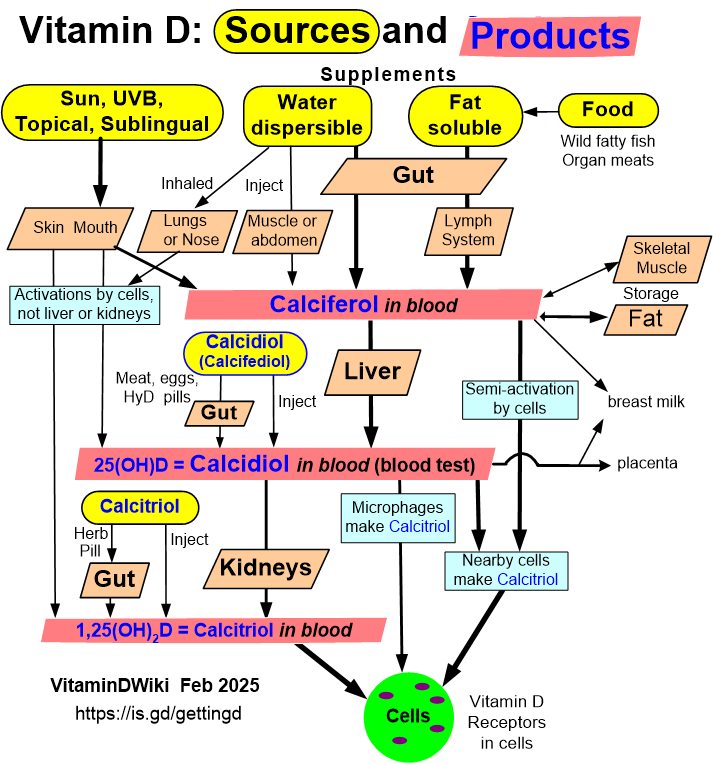Osteoporosis treatment by semi-activated (nutritional) Vitamin D
Role of nutritional vitamin D in osteoporosis treatment
Clinica Chimica Acta, Vol 484, Sept 2018, pg 179-191, https://doi.org/10.1016/j.cca.2018.05.035 $42 for PDF
lYi-Chou Houab Chia-Chao WucMin-Tser Liaode Jia-Fwu Shyuf Chi-Feng Hunggh Tzung-Hai Yenijk Chien-Lin Lub Kuo-Cheng Lub
 click on chart to see it larger, along with description
click on chart to see it larger, along with description
Highlights
Osteoporosis is composed by quality and quantity of bone mass.
Treatment for osteoporosis should be focused on the bone turnover rate in order to normalize the bone remodeling.
Nutritional vitamin D is an important regulator to maintain the bone remodeling due to its pleotropic effect.
Osteoporosis is a systemic skeletal disorder characterized by a decrease in bone mass and microarchitectural deterioration of bone tissue. The World Health Organization has defined osteoporosis as a decrease in bone mass (50%) and bony quality (50%). Vitamin D, a steroid hormone, is crucial for skeletal health and in mineral metabolism. Its direct action on osteoblasts and osteoclasts and interaction with nonskeletal tissues help in maintaining a balance between bone turnover and bone growth. Vitamin D affects the activity of osteoblasts, osteoclasts, and osteocytes, suggesting that it affects bone formation, bone resorption, and bone quality. At physiological concentrations, active vitamin D maintains a normal rate of bone resorption and formation through the RANKL/OPG signal. However, active vitamin D at pharmacological concentration inhibits bone resorption at a higher rate than that of bone formation, which influences the bone quality and quantity. Nutritional vitamin D rather than active vitamin D activates osteoblasts and maintains serum 25(OH)D3 concentration. Despite many unanswered questions, much data support nutritional vitamin D use in osteoporosis patients. This article emphasizes the role of nutritional vitamin D replacement in different turnover status (high or low bone turnover disorders) of osteoporosis together with either anti-resorptive (Bisphosphonate, Denosumab et.) or anabolic (Teriparatide) agents when osteoporosis persists.
